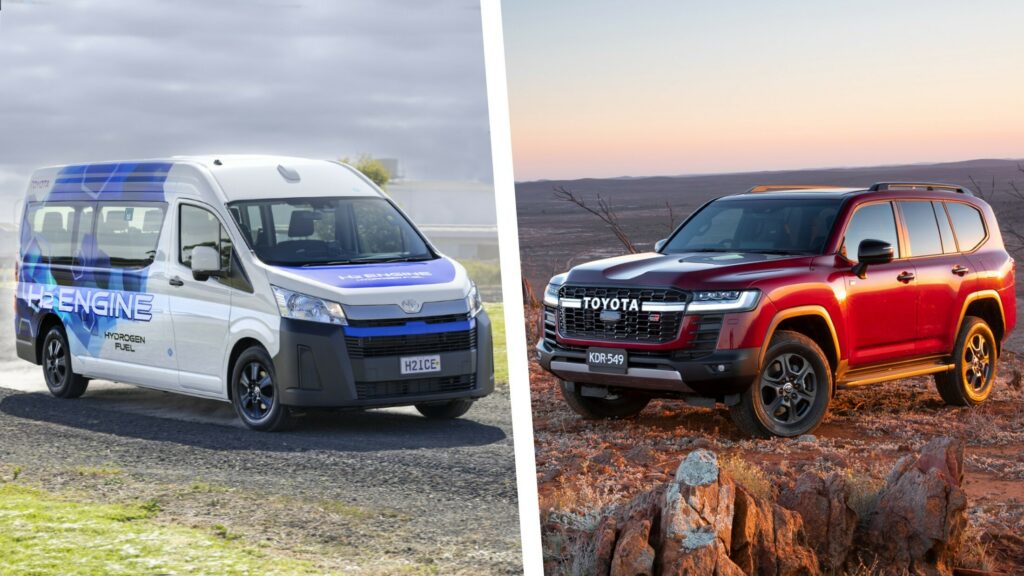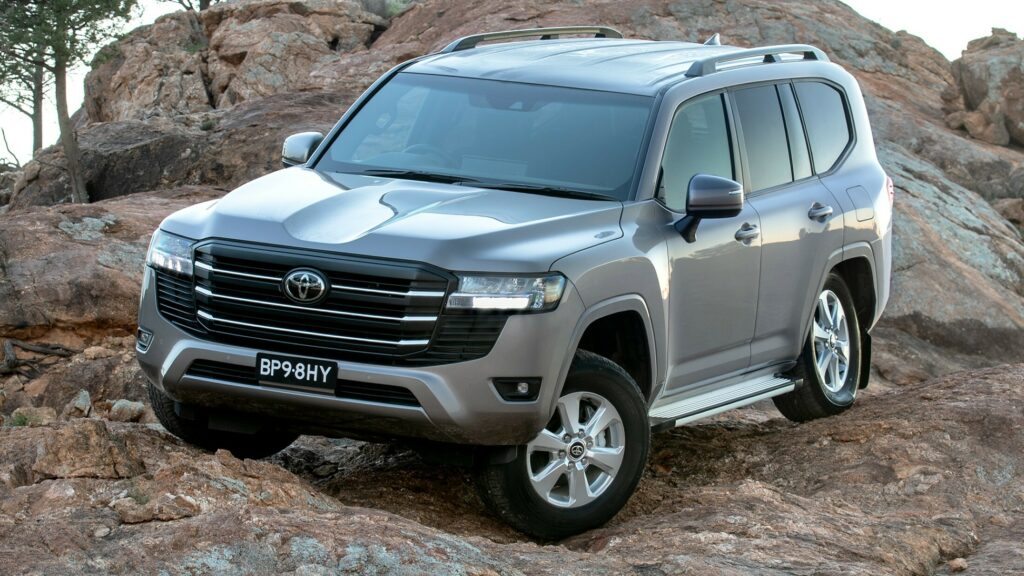Starting in late November 2023, the Toyota Hydrogen HiAce will be tested in real-world conditions
3 hours ago
 –>
–> 
–>
Toyota Australia revealed a prototype of the HiAce van with a hydrogen-fuelled internal combustion engine, set to be part of a customer pilot program starting later this month. Furthermore, Toyota officials revealed that the technology is under consideration for larger vehicles, including the Land Cruiser, with the addition of hybrid assistance being one of the options for the future.
Toyota started developing hydrogen-fuelled combustion engines back in 2017, with prototypes of the GR Corolla and GR Yaris appearing in 2021. Now, the program has been expanded to include larger vehicles and powertrains. The reason that the HiAce was chosen instead of the Land Cruiser for the first prototypes, was the beneficial packaging of the van which allows the conversion to have a minimal impact on interior space and payload. Another reason was the limited range requirements of the LCV which is normally used for short “back to base” commercial operations.
More: Toyota Land Cruiser FJ Trademark Hints At New Compact Off-Roader
Toyota Australia
The prototype comes fitted with a modified version of the turbocharged 3.5-liter V6 which is also used by the Land Cruiser Series 300 and the Lexus LX in certain markets. The mill was converted to burn compressed hydrogen gas instead of petrol thanks to a new direct-injection system.
advertisement scroll to continue
After the conversion, the engine produces 161 hp (120 kW / 163 PS) and 354 Nm (261 lb-ft) of torque, sending power to the rear axle via a 10-speed automatic. Those numbers make it significantly less powerful than its petrol-powered counterpart which produces 409 hp (305 kW / 415 PS) and 600 Nm (443 lb-ft) of torque.
Despite the massive drop in power and torque, the new fuel makes the engine cleaner, resulting in “ultra-low” CO2 emissions. Still, unlike FCEVs like the Toyota Mirai that only emit water from their tailpipes, the hydrogen-fuelled combustion engine emits small amounts of nitrogen oxides (NOx). According to Toyota, those have been reduced to meet the Euro 6 emission regulations thanks to a selective catalytic reduction system.
The compressed hydrogen gas is stored in a trio of hydrogen tanks similar to those used in the second-gen Toyota Mirai FCEV. The total capacity of 141 lt (37.2 gallons) is enough for a 200 km (124-mile) range between refueling stops. This sounds limited for a commercial vehicle but Toyota is already working on a range expansion by enhancing hydrogen storage, improving combustion, and possibly adding hybrid technology into the mix.
Hydrogen-Fulled Land Cruiser Already Under Development

Speaking to CarExpert, Mitsumasa Yamagata, president of Toyota’s hydrogen projects said: “There are possibilities to adapt the technology into big vehicles, including the Land Cruiser”. Yamagata also confirmed that Toyota has indeed “started development of the technology on larger vehicles, including the Land Cruiser” adding “I said again, this advantage of the technology can be utilized for those vehicles including high towing and high loading”.
Mattheo Callachor, Toyota Australia president and CEO also admitted that a hydrogen-fuelled Land Cruiser is “one of the possibilities” but downplayed the enthusiasm saying that this would require “significant engineering”.
A hydrogen version of the iconic SUV would allow it to retain its off-road prowess and towing credentials without a significant investment in R&D as it retains most of the existing technology. At the same time, the drastically reduced emissions would allow it to remain compatible with the forthcoming stricter regulations in some markets.
It seems that one of the challenges faced by Toyota engineers is packaging, as they have to figure out how to add hydrogen tanks without compromising the Land Cruiser’s practicality. Another crucial factor is the network of hydrogen refueling stations and how rapidly it could expand within the next few years.
Aiming At Commercialization
Starting in late November 2023, the Toyota Hydrogen HiAce will be tested in real-world conditions by Australian companies in order to evaluate the technology and provide feedback for further development. The first examples will be used by CPB Contractors to transport workers on a “major infrastructure project” in Melbourne followed by other “commuter” and “delivery-type” applications.
The LCV might be currently at a prototype stage, but the aim of the program is to bring vehicles powered by hydrogen-fuelled ICE to “full commercialization”. Toyota didn’t provide a timeline for the debut of a production offering using this technology but the state of the prototypes makes us believe it could be possible for the second half of the decade.
The hydrogen-fuelled ICE development program is included in Toyota’s “multi-pathway approach to decarbonization”, alongside the investments in carbon-neutral fuels, hybrid, plug-in hybrid, battery electric, and fuel-cell electric vehicles.
